 EN
EN
 PT
PT
Lower secondary school
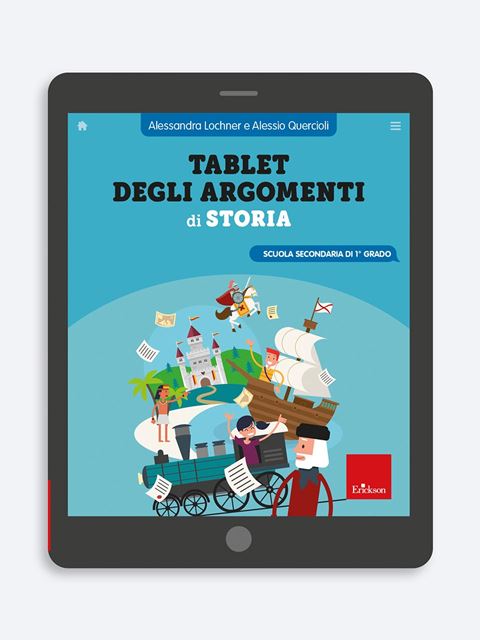
Product: Book
Trim size in cm: 21x27cm
Pages: 304
ISBN: 9788859026358
Publication date: 01/09/2021
Suitable for: Lower secondary 1st level (ages 10-11), Lower secondary 2nd level (ages 12-13)
REQUEST A SAMPLE OR MORE INFORMATION
The tablet of history topics presents all the topics of the lower secondary school history programme, following the progressive level of difficulty of the subject while helping students with independent study and the development of the basic skills of the discipline.
Easy to consult, thanks to a clear and clean colour graphic layout and the adoption of a simple and immediate vocabulary, it is an indispensable tool for all students, teachers and parents and can be very effective for pupils with Specific Learning Disorders.
Three historical periods
The volume is divided into three historical periods: the Middle Ages, the Modern Age and the Contemporary Age. The topics are treated in such a way as to be easily adapted to different teaching methodologies as well as the different textbooks adopted. At the end of the volume a brief presentation of the main historical figures is given.
Structure of the chapters
After an introduction of the topic presented, each chapter is subdivided into four parts:
When? containing the chronological order of the main events which occurred arranged on a timeline;
Where?, with a geographical map showing the important places and information;
Why?, with an explanation of the events in the cause-event-effect mode;
How? (or “In what way?”), with schematized insights into a particular topic.
THE MIDDLE AGES
What are the Middle Ages?
The III century crisis and the empire and the spread of Christianity
The migration of the Germanic peoples
Ostrogoths, Byzantines, Longobards and Franks in Italy
The birth of the Arabian civilization and its development
Monasticism
The birth of the kingdom of the Franks and Charlemagne
The fall of the Empire and the Signorie
The economy and the society after the year 1000
The long fight between the Pope and the Empire
The birth of Comunes and Frederick Redbeard
The crusades
The church: heresies and new orders
Frederick II
The fourteenth century crisis
From Comunes to Signorie to Regional states
National monarchies
Humanism and the Renaissance
THE MODERN AGE
What is the modern age?
The voyages of discovery and the colonial empires
Italy contested between France and Spain
The protestant reformation and the counter-reformation
Philip II and Elizabeth I: Spain and England collide
The French wars of religion
The Thirty Years War
The absolute monarchy in France
England and the parliamentary monarchy
The seventeenth century, a century of contradictions
The eighteenth century and Illuminism
From the agricultural revolution to the industrial revolution
American independence and the birth of a nation
The French revolution
Napoleone Bonaparte
The failure of the Restoration
Tje Italian resurgence
The second industrial revolution
THE CONTEMPORARY AGE
What is the contemporary age?
The first years of Italian unity
Nationalism and imperialism
The Belle Époque
Italy and the beginning of the twentieth century
The first world war
The Russian revolution and Stalin’s ascension to power
The first postwar Europe: the peace treaties
Fascist Italy
Germany and the ascent of Nazism
The second world war
A divided world: The Cold War
The Italian Republic
Decolonization
World issues today
PROTAGONISTS OF HISTORY

Lower secondary school
This volume offers the entire history programme of lower secondary school in a simplified format. Practical and manageable, just like a real tablet where any piece of information can be instantly found with a simple touch, The Tablet of History Topics presents topics from the Middle Ages to the Contemporary Age. A tool designed to complement textbooks and help students with self-study and the development of the basic skills of the discipline. Easy to consult, thanks to a clear and clean colour graphic layout and the adoption of a simple and immediate vocabulary, it is an indispensable tool for students, teachers and parents, and can be very effective for pupils with Specific Learning Disorders.
Structure of the book
The volume is divided into three historical periods: the Middle Ages, the Modern Age and the Contemporary Age. The topics are treated in such a way as to be easily adapted to different teaching methodologies as well as to the different textbooks used in class. At the end of the volume, there is a brief presentation of the main historical figures.

Structure of the chapters
After an introduction to the topic, each chapter is divided into four parts:
When?, contains the temporal reference for the main events placed on a timeline;
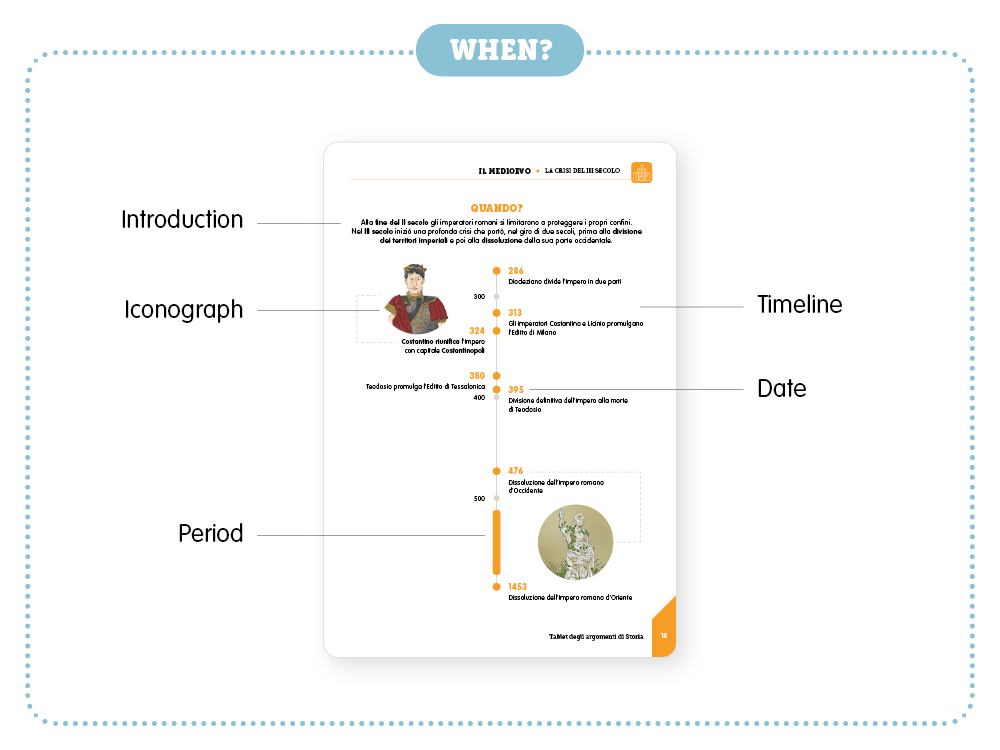
Where?, with a geographical map showing the important places and information;
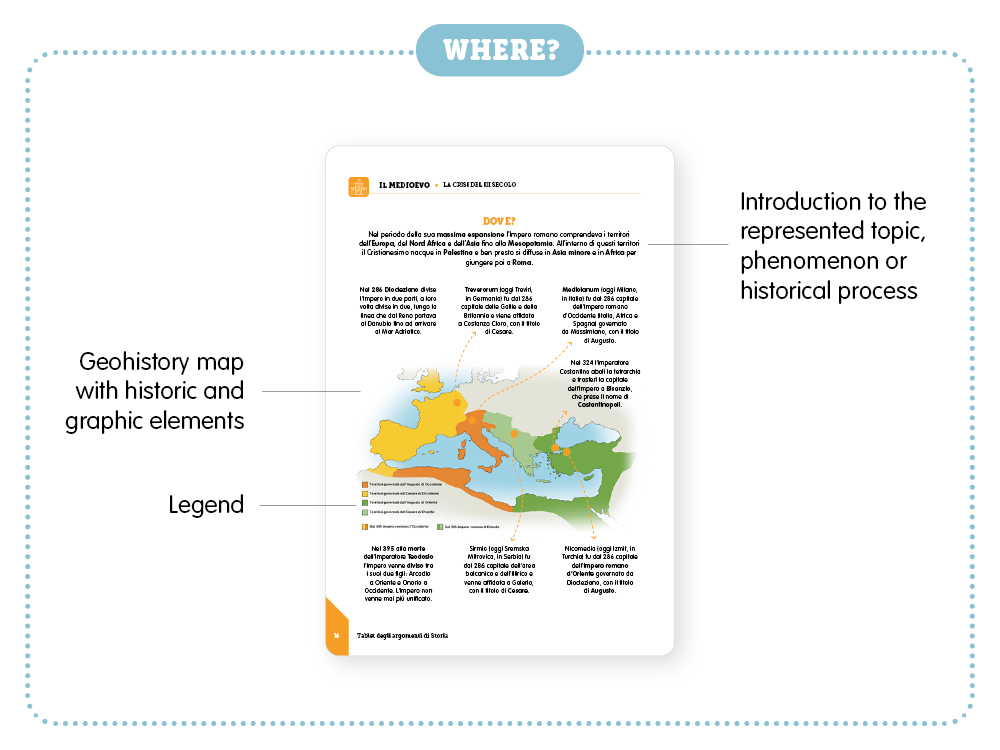
Why?, with an explanation of events in a cause-effect relationship;
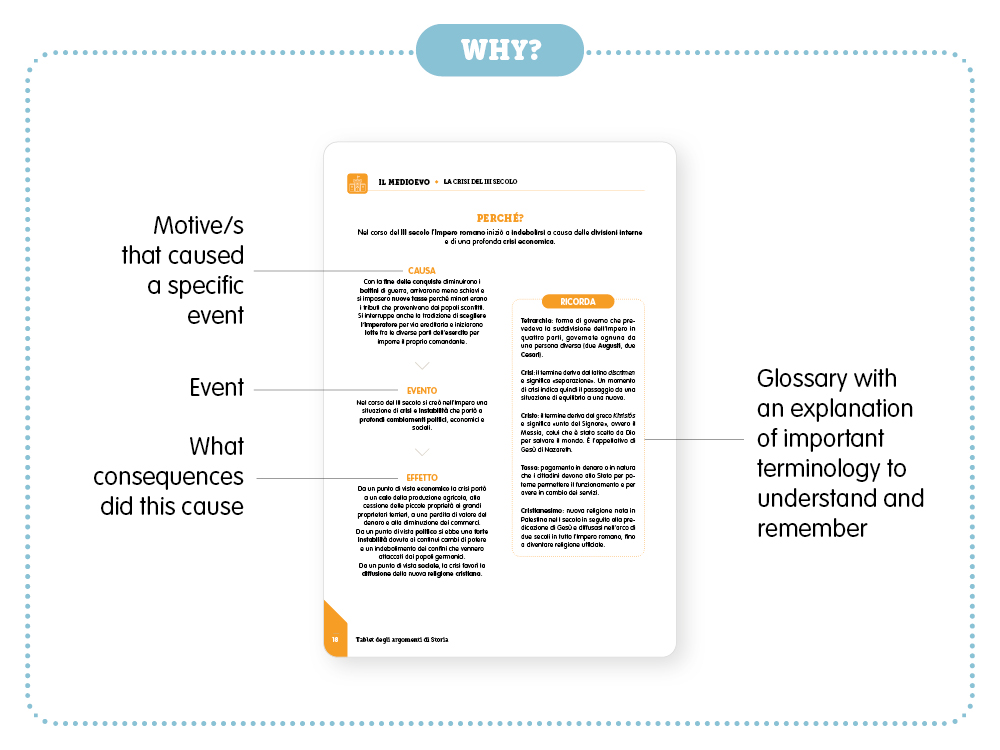
How? (or “In which way”), with schematic insights about a particular topic.
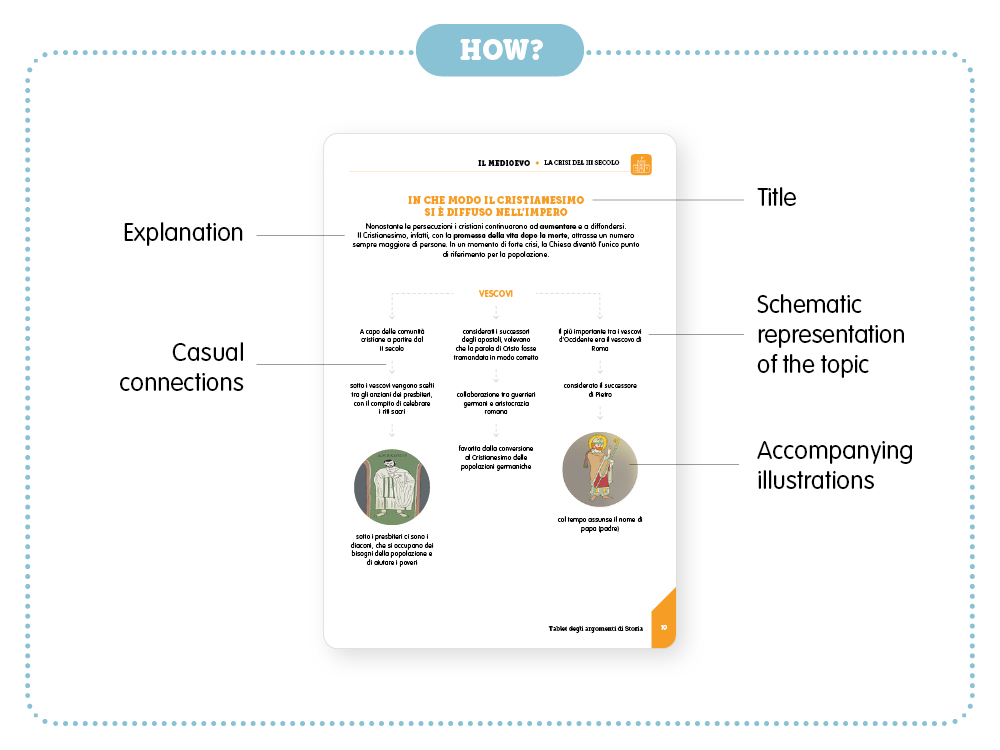
Progressive subject level difficulty
The topics are presented in increasing levels of difficulty, in the same order that the subject is taught from the first to the third year of middle school.
Leaf through some selected pages from the book that have been translated into English to facilitate your evaluation:
The Author
Alessandra Lochner With a degree in Modern Literature with a specialization in History and Criticism of the Arts at the University of Trento, she is a secondary school Literature teacher. She has carried out research in the field of cinema and toponymy, has worked with the UCT publishing house and with some online newspapers on the topics of literature and cinema.